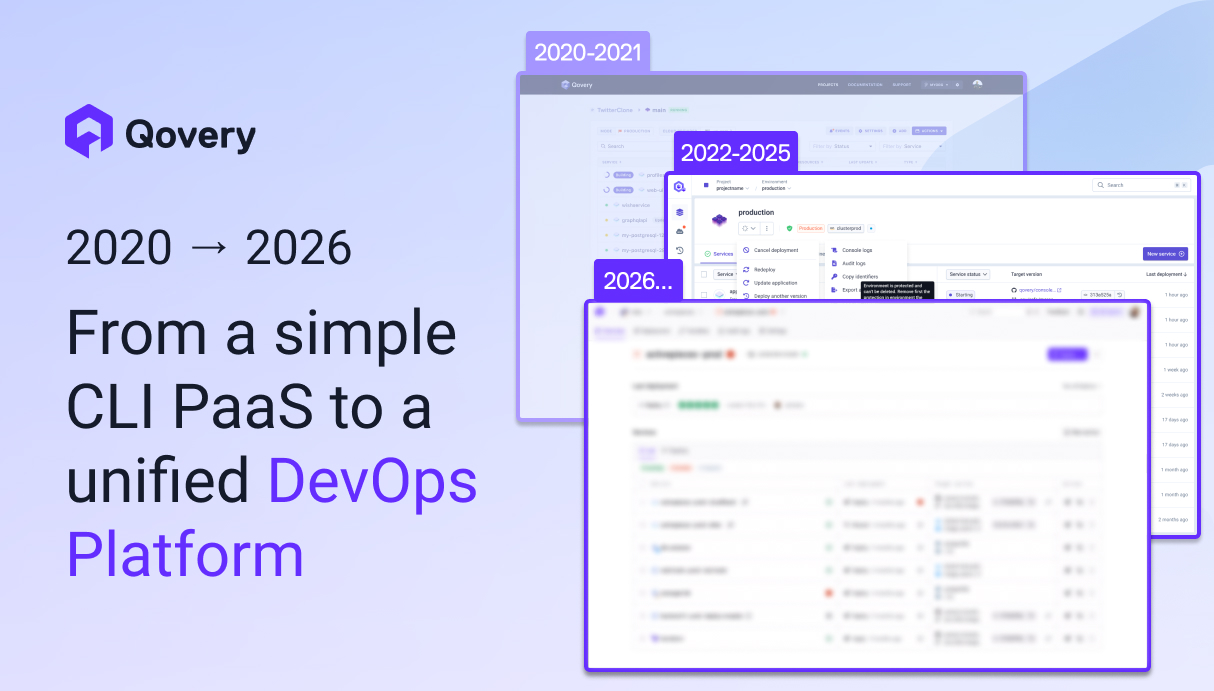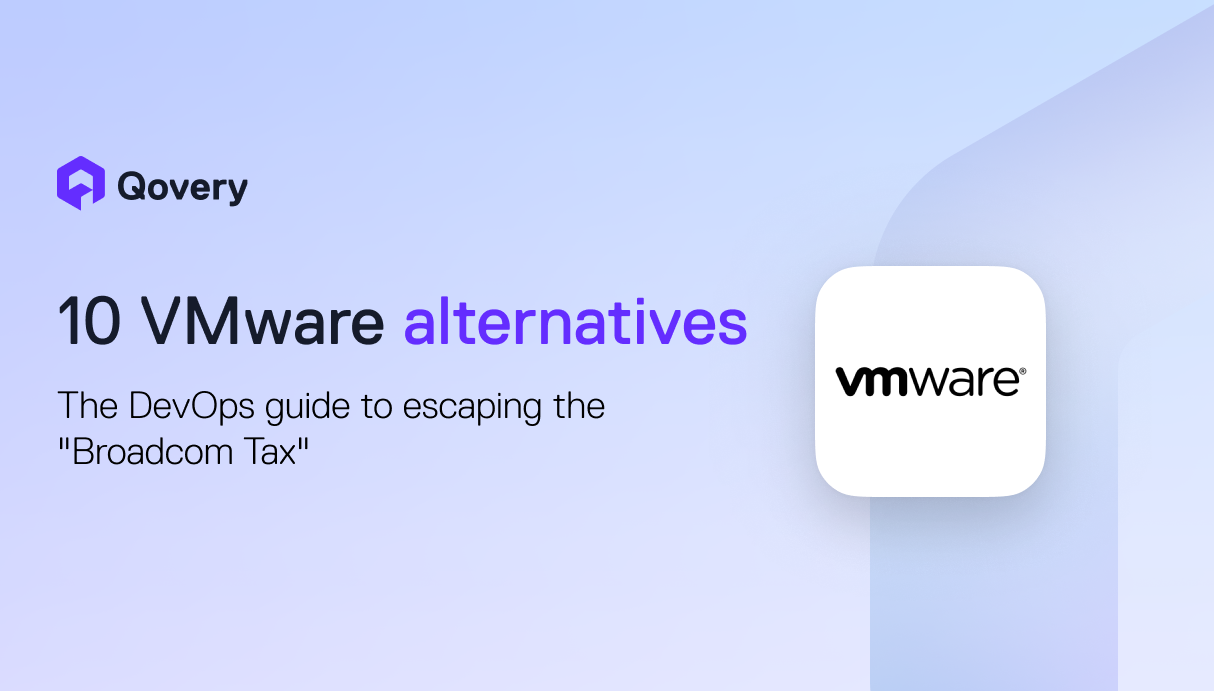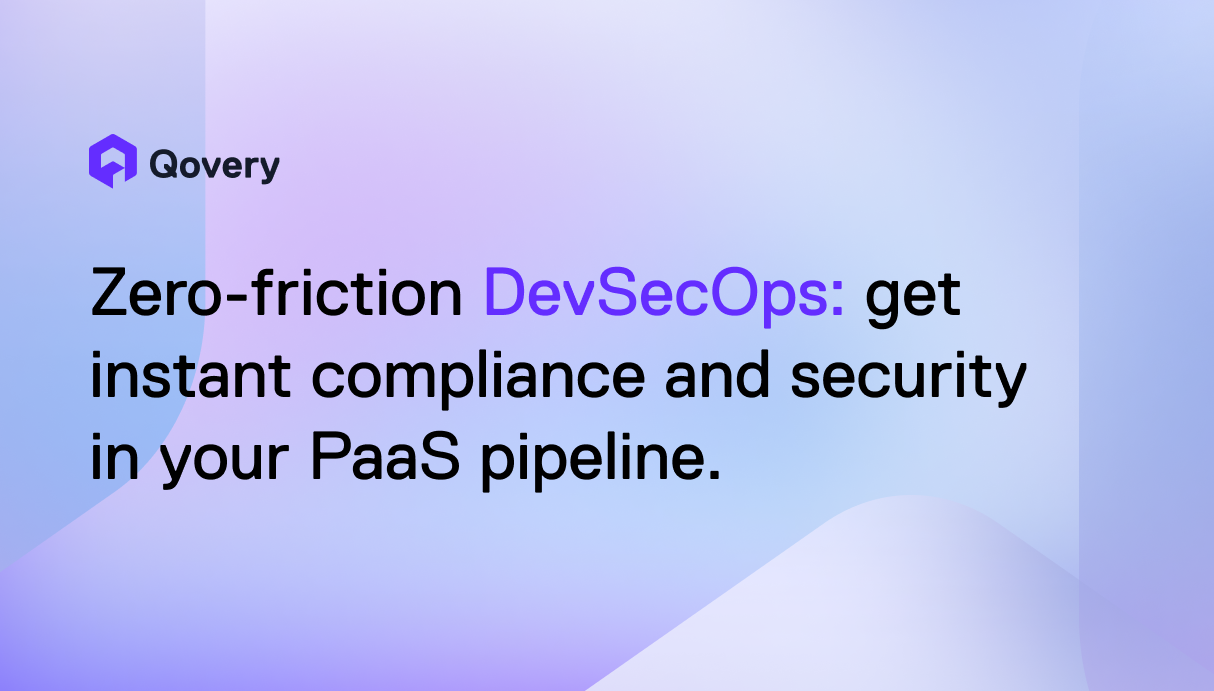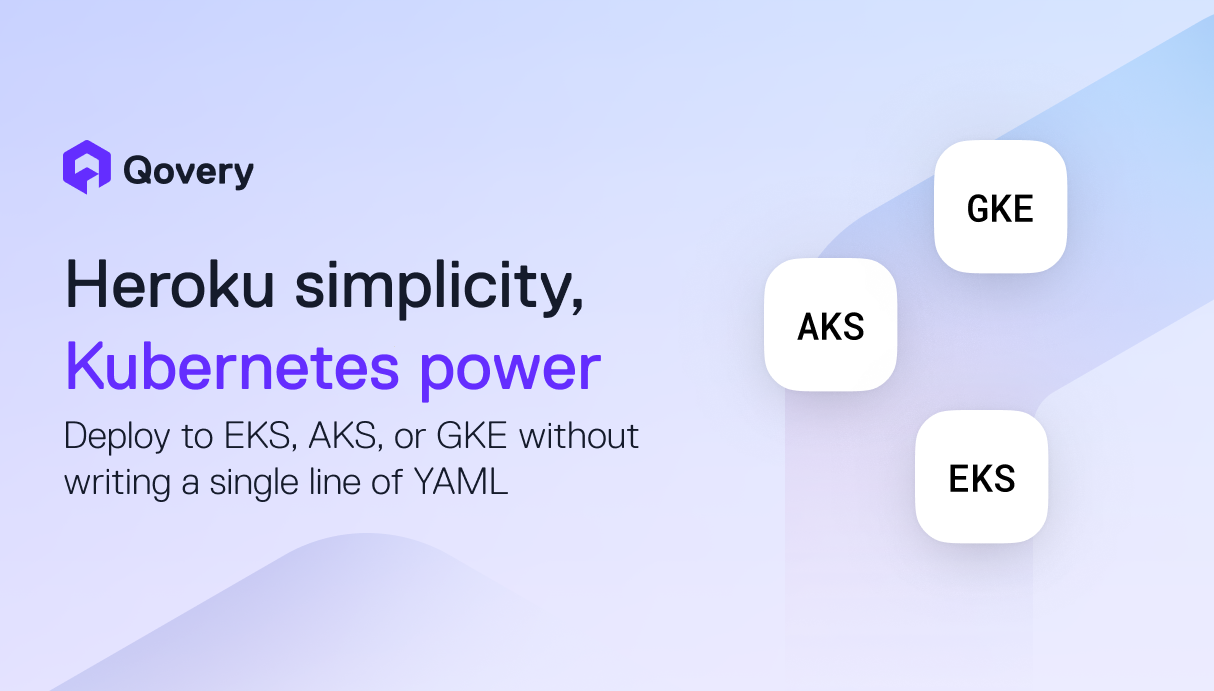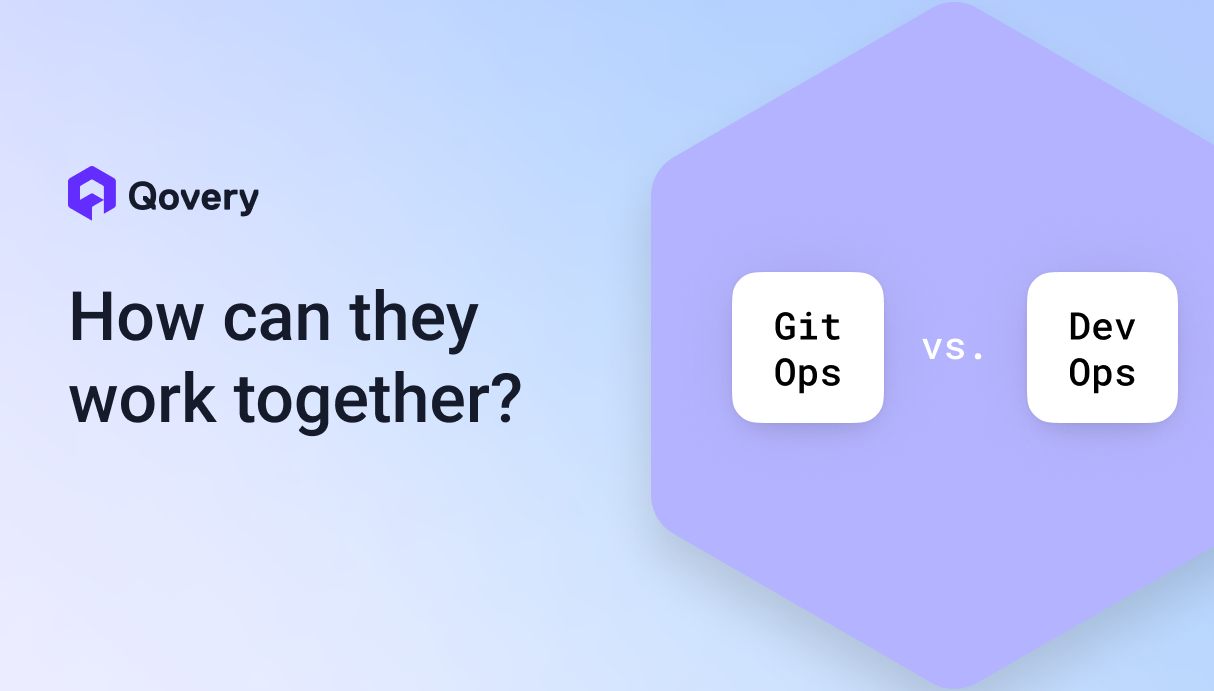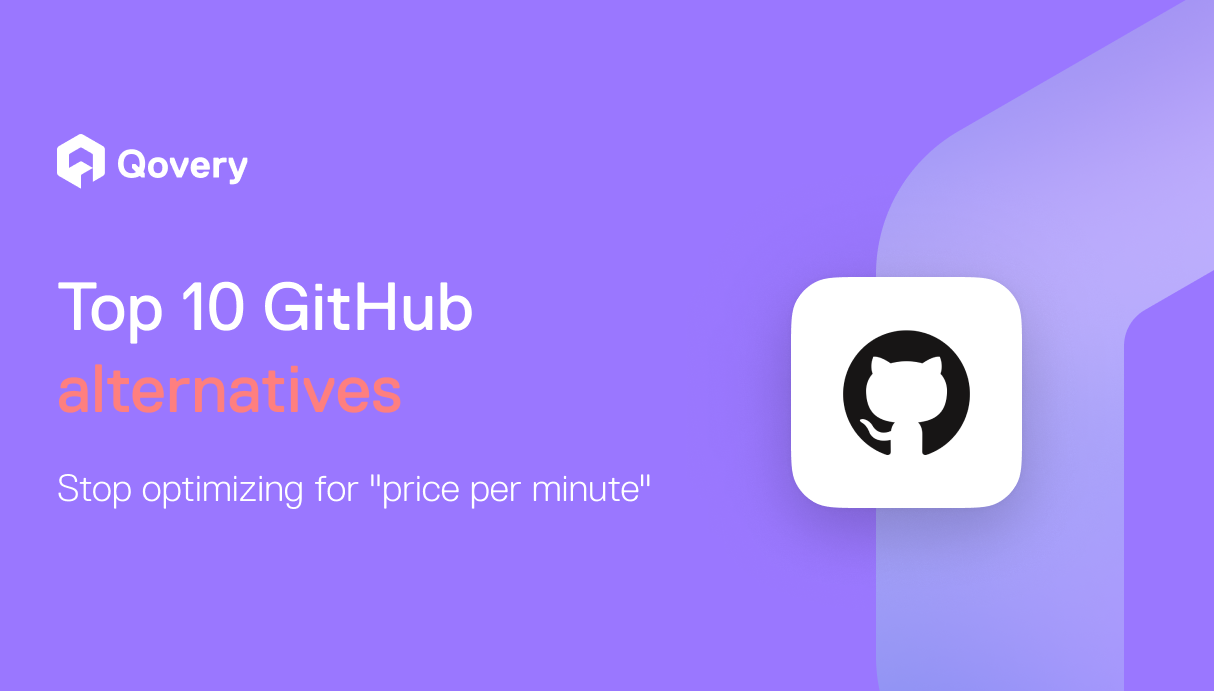


10 Best Platform Engineering Tools for DevOps Teams



Key Points:
- Platform engineering is about empowering developers with self-service tools. Instead of manual processes, platform engineering provides teams with an integrated platform that automates the application lifecycle, from infrastructure provisioning to deployment.
- Building a robust platform requires a combination of specialized tools. Key technologies like Kubernetes for container orchestration, Crossplane for infrastructure management, and Docker for containerization form the foundation of an effective platform.
- Modern platforms, like Qovery, simplify the creation of Internal Developer Platforms (IDPs). These tools enhance the developer experience by providing a unified interface to manage complex infrastructure, allowing developers to focus on writing code and shipping features faster.
So, you've heard about platform engineering and the promise of faster software delivery, but where do you even start? What tools do you actually need to build a successful internal developer platform?
Building a platform isn't about picking one magic bullet; it's about strategically choosing a combination of tools that work together to create a seamless developer experience. This isn't just about automation; it's about empowering your developers to manage the entire application lifecycle on their own, from code to deployment, without getting bogged down in complex infrastructure.
If you're new to the concept, we have an in-depth guide that answers the question, "What is Platform Engineering?" This guide dives into the principles and benefits behind this transformative approach.
The Essential Platform Engineering Toolkit
To help you get started, here are some of the key tools you should consider for your platform. Each one serves a critical purpose in enabling developer self-service and automating the complexities of cloud-native development.
Tool 1: Qovery - The #1 DevOps Automation Platform
Platform engineering is the key to unlocking true developer velocity, but building a platform from scratch can be a major undertaking. This is where Qovery comes in. It's a DevOps automation platform designed to eliminate the manual, repetitive work that slows teams down, allowing you to build a powerful internal developer platform (IDP) with ease.
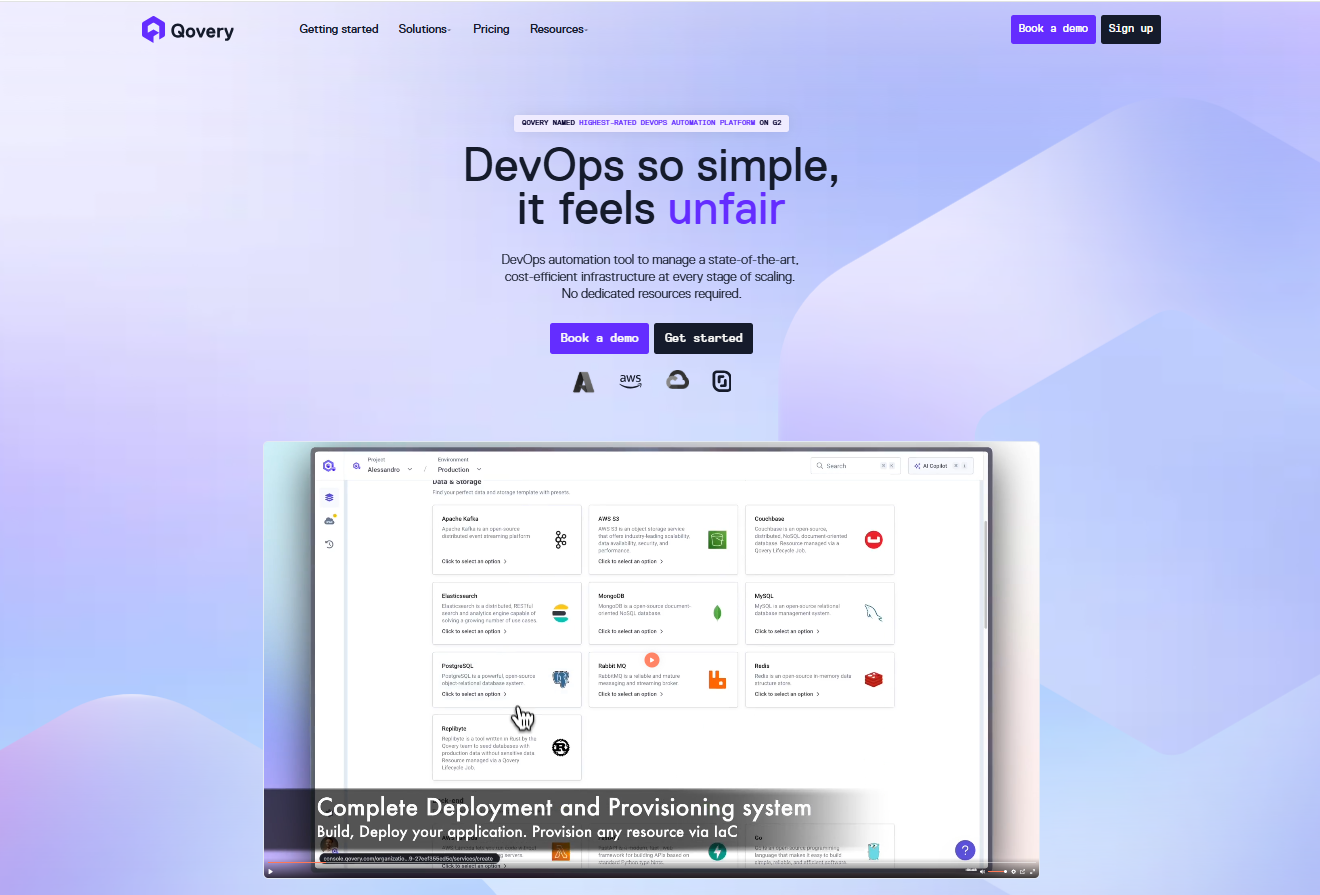
Qovery automates the entire application lifecycle, providing a seamless, self-service experience that empowers developers while giving platform teams full control. It handles the complexity of cloud infrastructure so your team can focus on what they do best: writing code.
By integrating directly with your cloud provider (AWS, GCP, or Azure), Qovery automates key DevOps workflows:
- Effortless Environment Management: Instantly spin up and tear down production-grade environments for development, staging, and preview.
- Automated Infrastructure Provisioning: Automatically provisions and configures your cloud resources and Kubernetes clusters.
- Streamlined Deployment Pipelines: Manages your entire CI/CD process, ensuring consistent and reliable deployments with every code commit.
This powerful combination gives you the best of both worlds: the flexibility and control of IaaS combined with the speed and simplicity of PaaS, all without the pain of managing complex infrastructure yourself.
Tool 2: Kubernetes for Containers Orchestration
Kubernetes, also known as K8s, is an open-source system for automating deployment, scaling, and managing containerized applications. Several processes can be automated using Kubernetes, including container configuration, scaling, networking, and security.
Among the best automation tools, Kubernetes is useful for application packages with many containers. Using it, developers can isolate and package container clusters so they can be deployed on several machines at the same time.
Using Kubernetes, you can create Docker containers automatically and assign them based on demands and scaling needs.

Tool 3: Crossplane for Cross Kubernetes Infrastructure Management
Good platforms are usually built on control planes, but building a control plane requires writing code and much code. With Crossplane, you can securely build a control plane tailored to your unique needs in days without writing tricky distributed systems code.
Using Crossplane, you can orchestrate everything, not just containers, extending the battle-hardened reliability and security of Kubernetes. Because Crossplane is built on the same foundation as Kubernetes, it integrates smoothly with the most popular cloud-native tools.

Tool 4: Gitlab CI for your CI
GitLab CI/CD is a tool for software development using the continuous methodologies:
GitLab CI/CD sets the standard by automatically using Auto DevOps to build, test, deploy, and monitor your applications. Catching bugs and errors early in the development cycle ensures that all code deployed to production complies with the code standards you established for your app.

Tool 5: Port for Building Developer Portals
Port serves as a centralized interface for DevOps teams to manage their applications and infrastructure. Customizable dashboards let you focus on the metrics that matter most to your team. With role-based access controls and built-in integrations, Port fits well in ecosystems that include GitHub and Jira.
/!\ This is not to be confused with an Internal Developer Platform. Read this article to understand the main differences between the two.
It supports Engineering Managers by allowing them to maintain standards and best practices across the organization. It can help them manage their whole tech ecosystem, from migrations to test certification. Developers, as it makes it fast and straightforward to build software components in a standardized way. It provides a central place to manage all projects and documentation. Platform engineers as it enables extensibility and scalability by letting them easily integrate new tools and services (via plugins), as well as extending the functionality of existing ones and everyone else as Backstage unifies all your infrastructure tooling, services, and documentation to create a streamlined development environment from end to end.
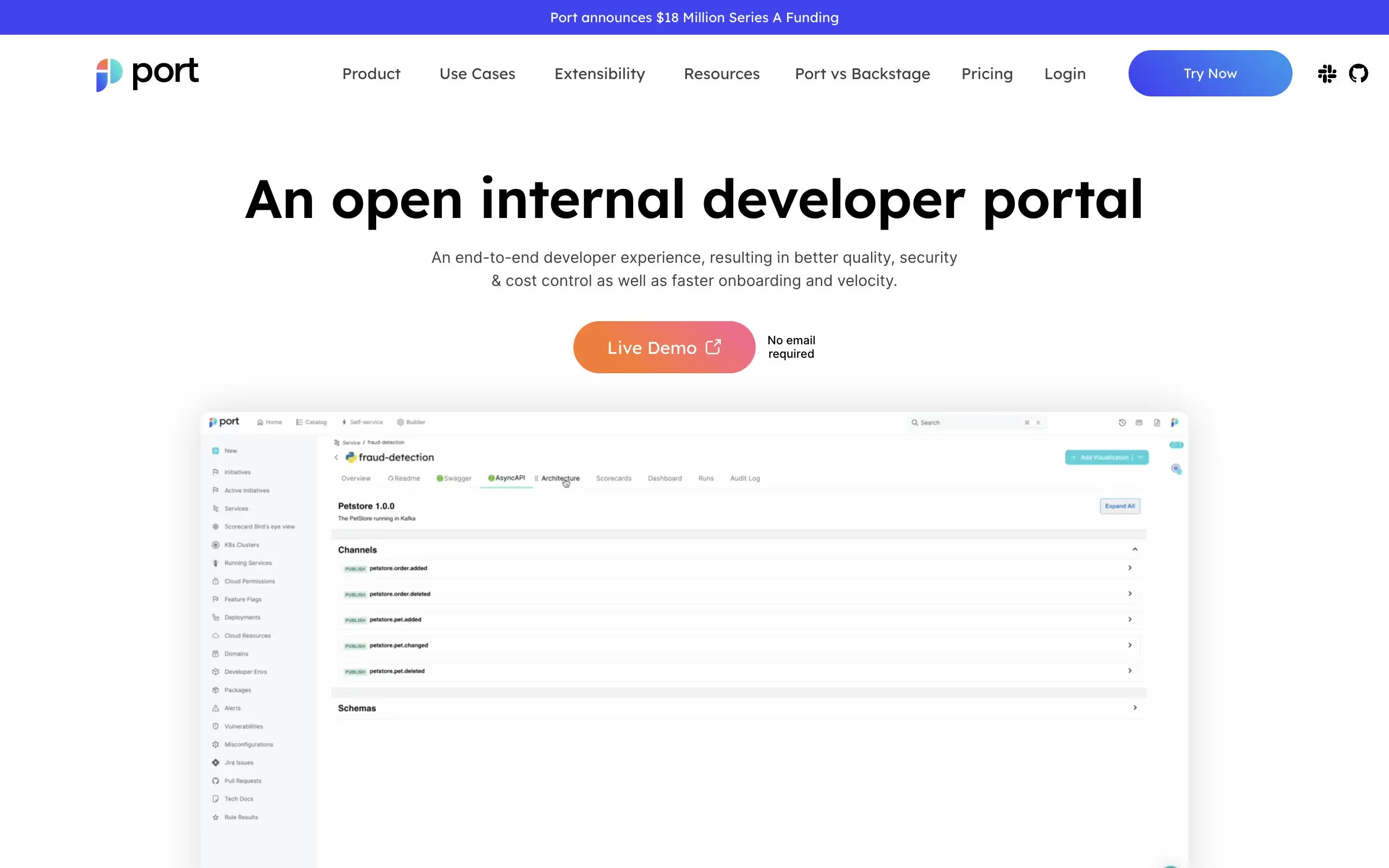
Tool 6: ArgoCD for your CD
Argo CD is a Kubernetes-native continuous deployment (CD) tool, scaled to meet the needs of modern applications. With Argo CD, you can deploy updated code directly to Kubernetes resources rather than using external CD tools that only allow push-based deployments. In one system, developers can manage both infrastructure configuration and application updates.
Key features and capabilities of Argo CD include manual or automatic deployment of applications to a Kubernetes cluster, automatic synchronization of application state to the current version of the declarative configuration, a web user interface and command-line interface (CLI), role-based access control (RBAC) enabling multi-cluster management and much more.
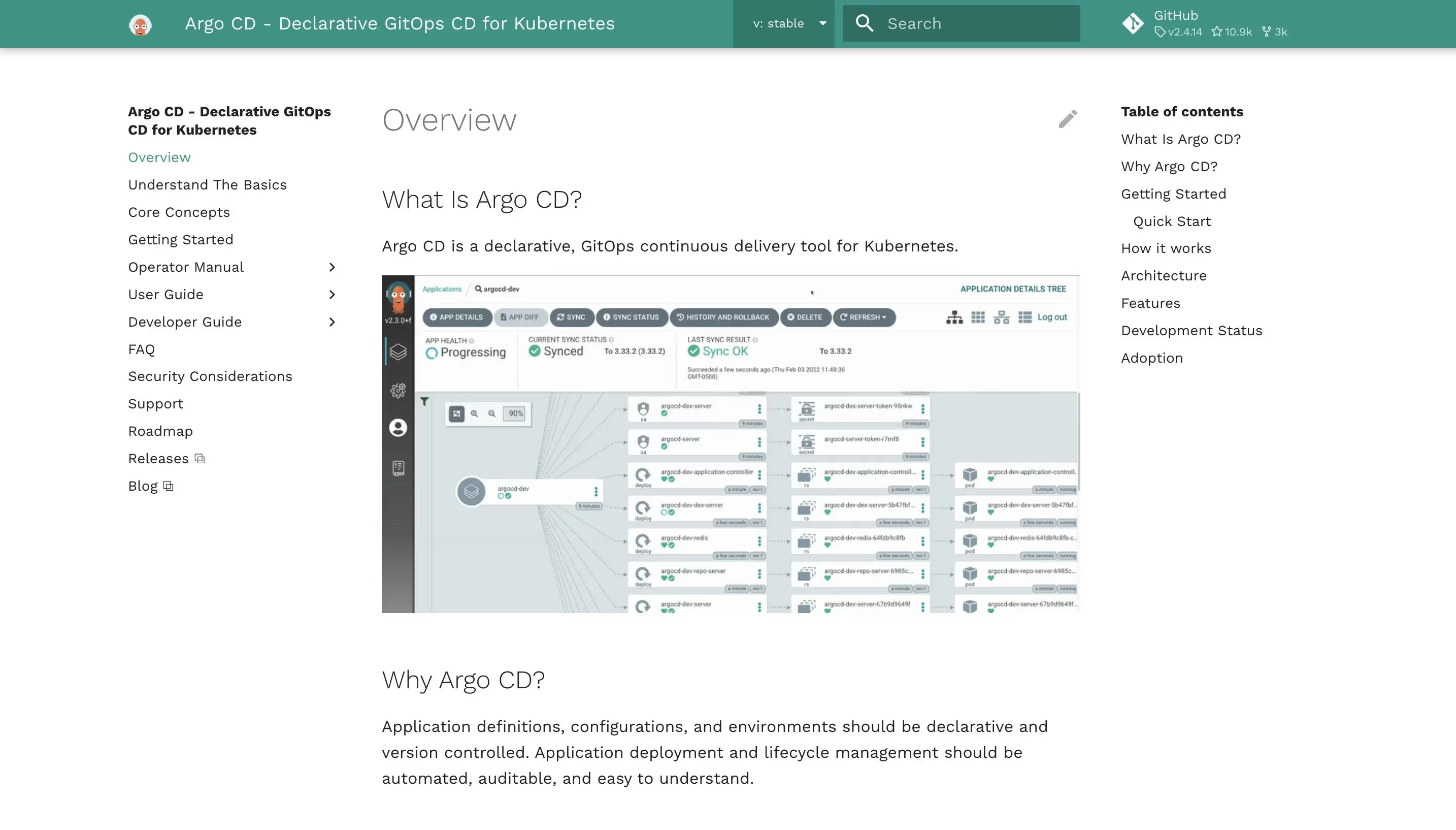
Tool 7: Docker to Containerize your Application
Docker is an open-source platform that enables developers to efficiently build, test, deploy, run, update and manage applications in resource-independent environments. Each container has a complete runtime environment, including the specific application's libraries, source code, configurations, and dependencies.
Containerization and microservices are used extensively for Platform Engineering for efficient application development and deployment, while Docker and Kubernetes are the most widely used container technologies.

Tool 8: Terraform to Automate Infrastructure Provisioning
Terraform is an open-source infrastructure as a code software tool created by HashiCorp. Thousands of products provide Terraform plugins (called providers) to manage them. You describe in a file how you want to configure your software and how you want to connect them, and Terraform manages everything for you. It is not magic. Thanks to the big Terraform community for providing and maintaining all the Terraform Providers.
By using Terraform, it becomes easier to create, modify, and improve your infrastructure without having to worry about manually provisioning or managing it. You can use AWS, Azure, Google Cloud, Kubernetes, OpenStack, and more. DNS records, monitoring systems, and custom providers can be managed with Terraform. It is easy to get started with and easy to use. Additionally, it is very powerful, enabling it to manage complex infrastructure quickly and efficiently.
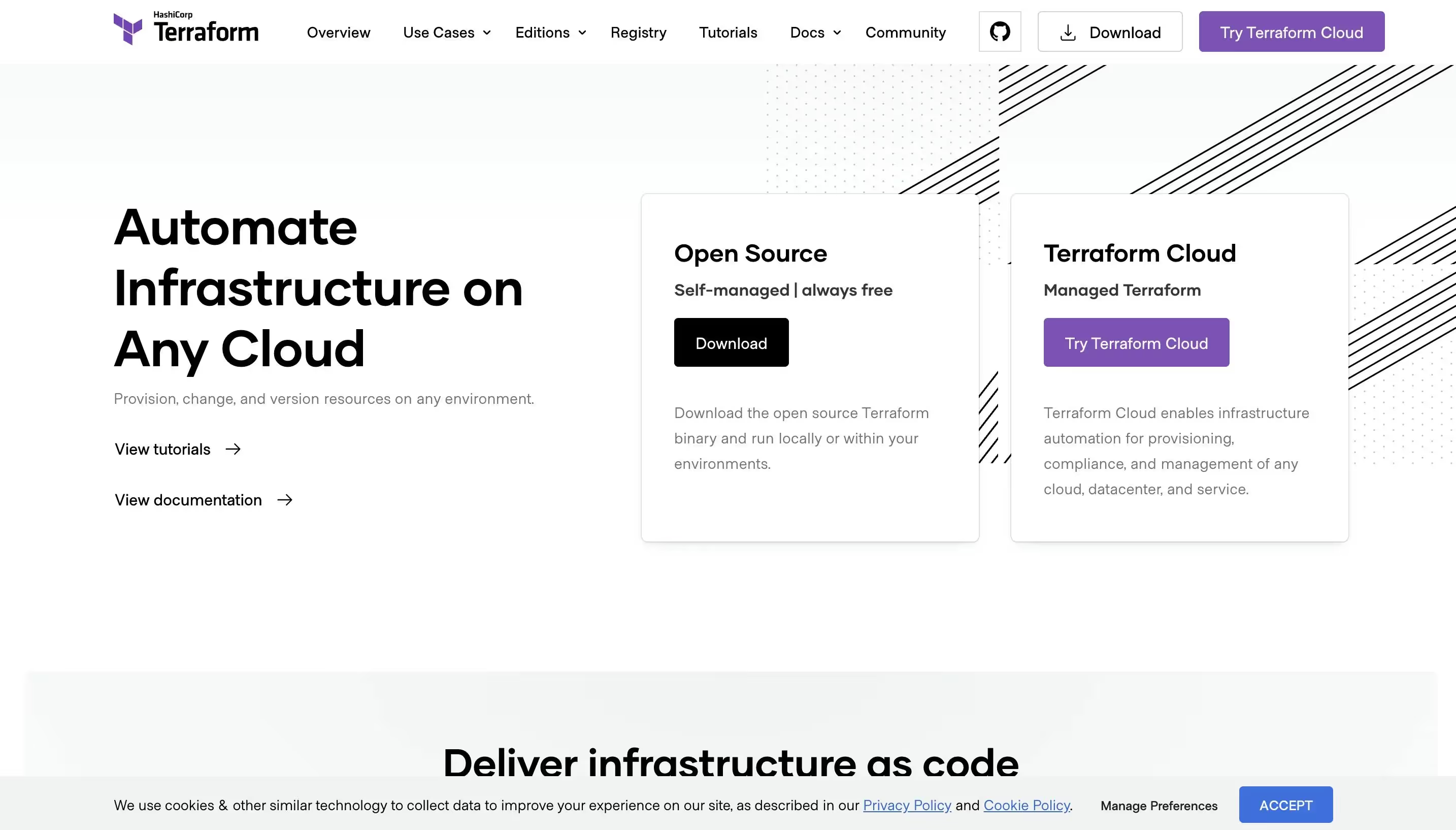
Tool 9: Doppler for Secret Management
Through its platform, Doppler serves as an encrypted source of truth for teams, allowing them to organize app secrets across projects and environments and roll back changes as needed. In Doppler, users can create references to frequently used secrets and receive alerts via Slack and Microsoft Teams when something changes.
It makes it the perfect tool for collaboration as after adding a secret, your team and their apps have it instantly, and it’s a precious time saver as you can automate the whole process by creating references to frequently used secrets in Doppler. When they need to change, you only need to update them once.
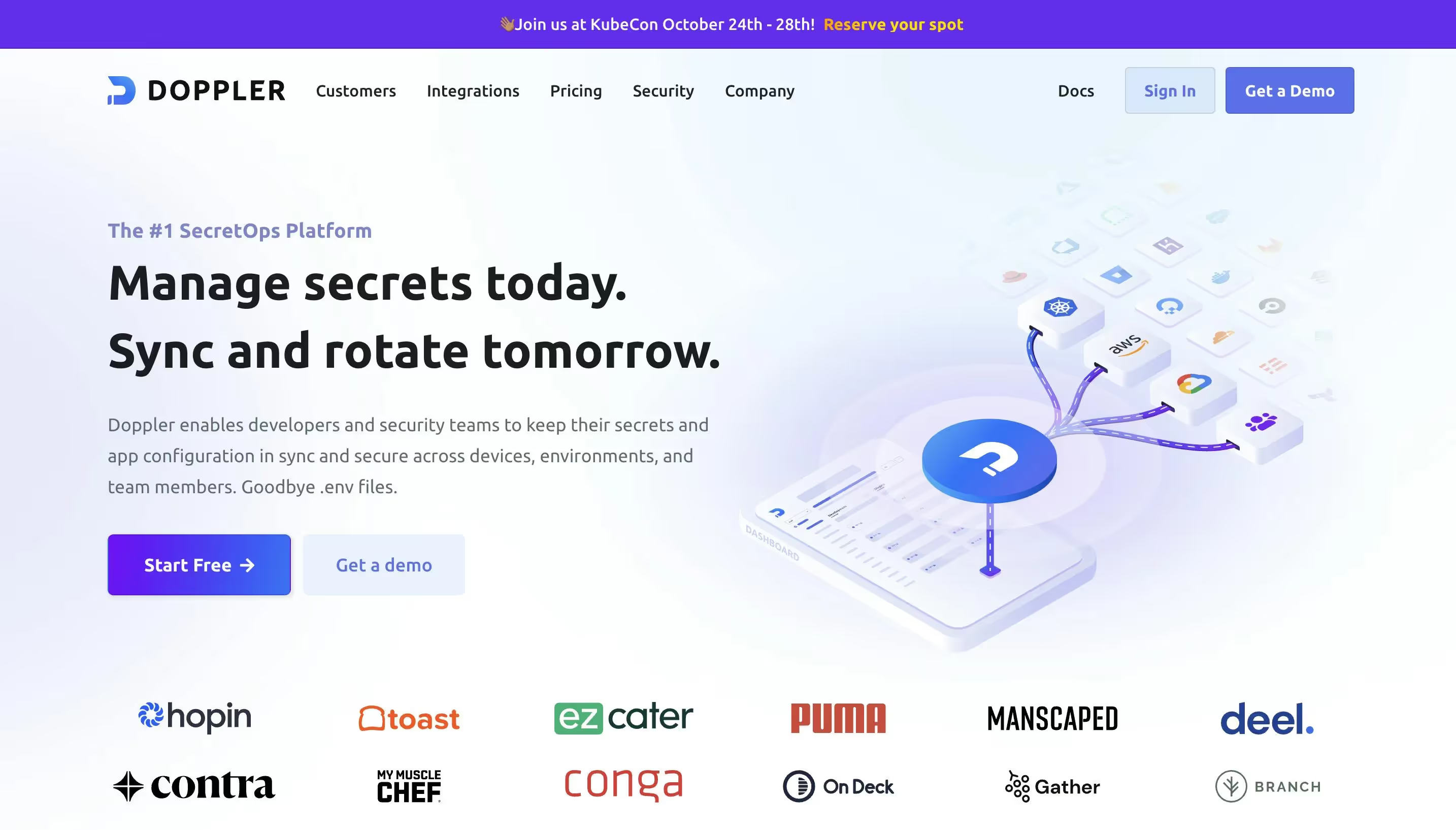
Tool 10: Datadog for Monitoring & Logging
Datadog is a robust monitoring and analytics platform for cloud-scale applications, providing full-stack observability. With Datadog, you can collect, visualize, and correlate metrics and logs across your infrastructure. It offers a comprehensive view of your environment, enabling you to monitor application performance, detect anomalies, and troubleshoot issues efficiently. Datadog's integrations with various services and technologies facilitate real-time insights and proactive monitoring.
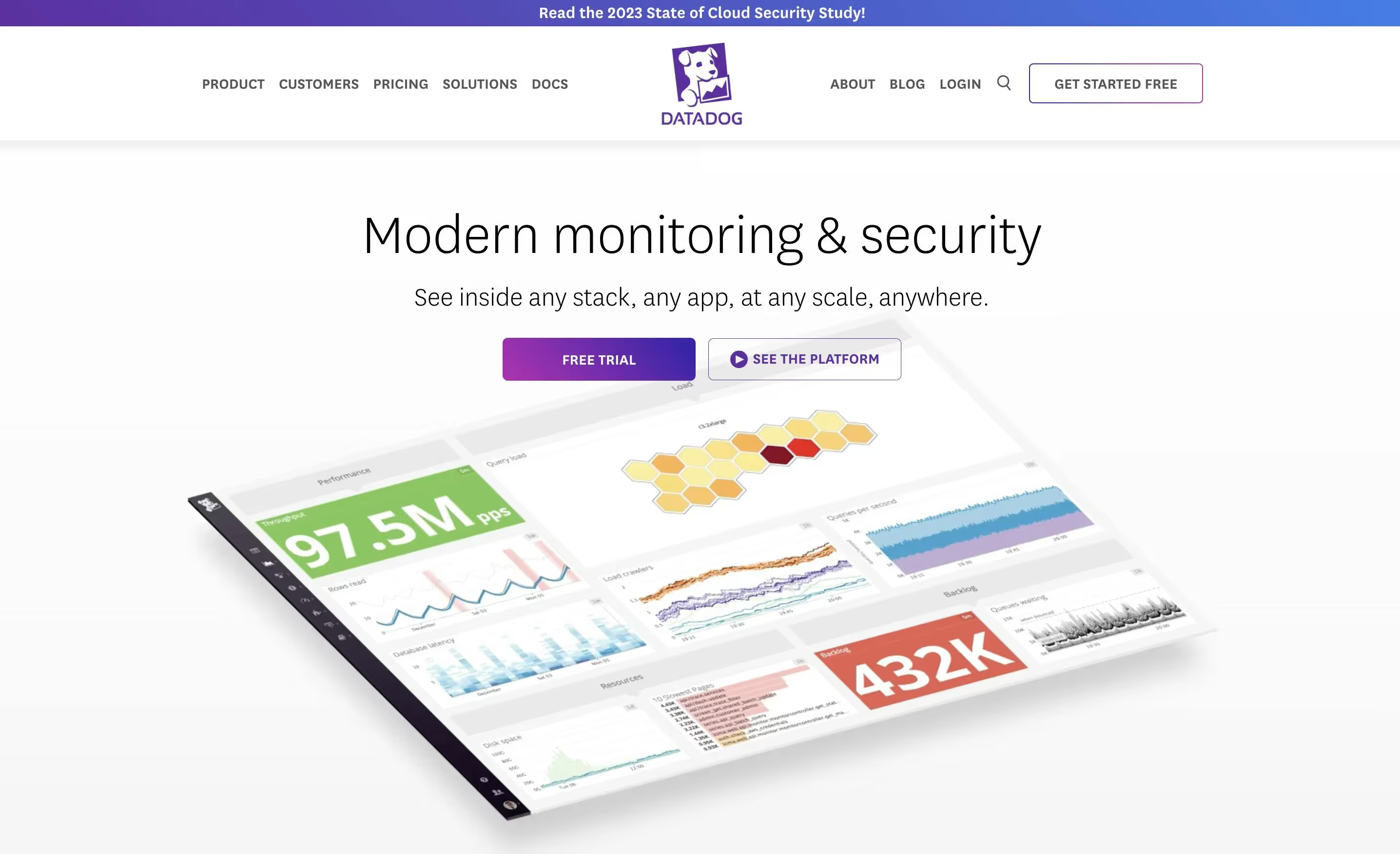
Qovery: The DevOps Automation Platform for Faster Delivery and Developer Self-Service
1. Eliminate Manual Overhead & Accelerate Delivery 🚀
Qovery automates the most time-consuming aspects of the software development lifecycle, allowing teams to focus on what matters most: writing code and building features. Instead of spending hours or days manually provisioning infrastructure, configuring pipelines, or setting up environments, Qovery handles it all. This dramatically reduces time-to-market and boosts developer velocity. It's DevOps on autopilot, making your deployment process up to 5x faster.
2. Empower Developers with Self-Service
Qovery is built to enable an Internal Developer Platform (IDP), giving developers the power to manage their own application lifecycles from a simple, intuitive interface. This self-service model reduces the cognitive load on developers and frees platform engineering teams from repetitive requests. Developers can easily provision new environments, manage deployments, and access key tools without deep knowledge of complex underlying technologies like Kubernetes.
3. Maintain Control Without the Complexity
Unlike traditional PaaS solutions that can lead to vendor lock-in and limited flexibility, Qovery operates on your own cloud account (AWS, GCP, Azure). This means you retain full ownership and control over your infrastructure, data, and security policies. Qovery abstracts the complexity of managing Kubernetes clusters while ensuring you keep the flexibility and security you need. It’s the ideal solution for companies that want the benefits of a managed platform without sacrificing control.
Conclusion
It isn't easy to pick a Platform Engineering tool best suited for your needs. Factors like cost, skillset, features, UI/UX, etc., play a decisive role in choosing the right tool for your business. The best choice is not to use just one tool. Instead, use a combination of tools suited to your needs.
At Qovery, we also use many Platform Engineering tools. These include the following:
- Infrastructure as Code: Terraform
- Internal Developer Platform: Qovery (yes, we are using Qovery for Qovery 😅)
- CI/CD: GitHub Actions, Gitlab CI
- Deployment tools: Helm, Kubernetes
- Environment as a Service: Qovery
- Secret Management: Vault, AWS KMS
- Observability & Monitoring: Datadog, Grafana (including Loki & Promtail), Prometheus (including Alertmanager)
Whether you are taking your first steps with Platform Engineering or you are an expert, we aim to support your journey by introducing you to these essential tools. If you have any other ideas, don’t hesitate to give us a shout or share them on the forum so the rest of the community can enjoy them as well.
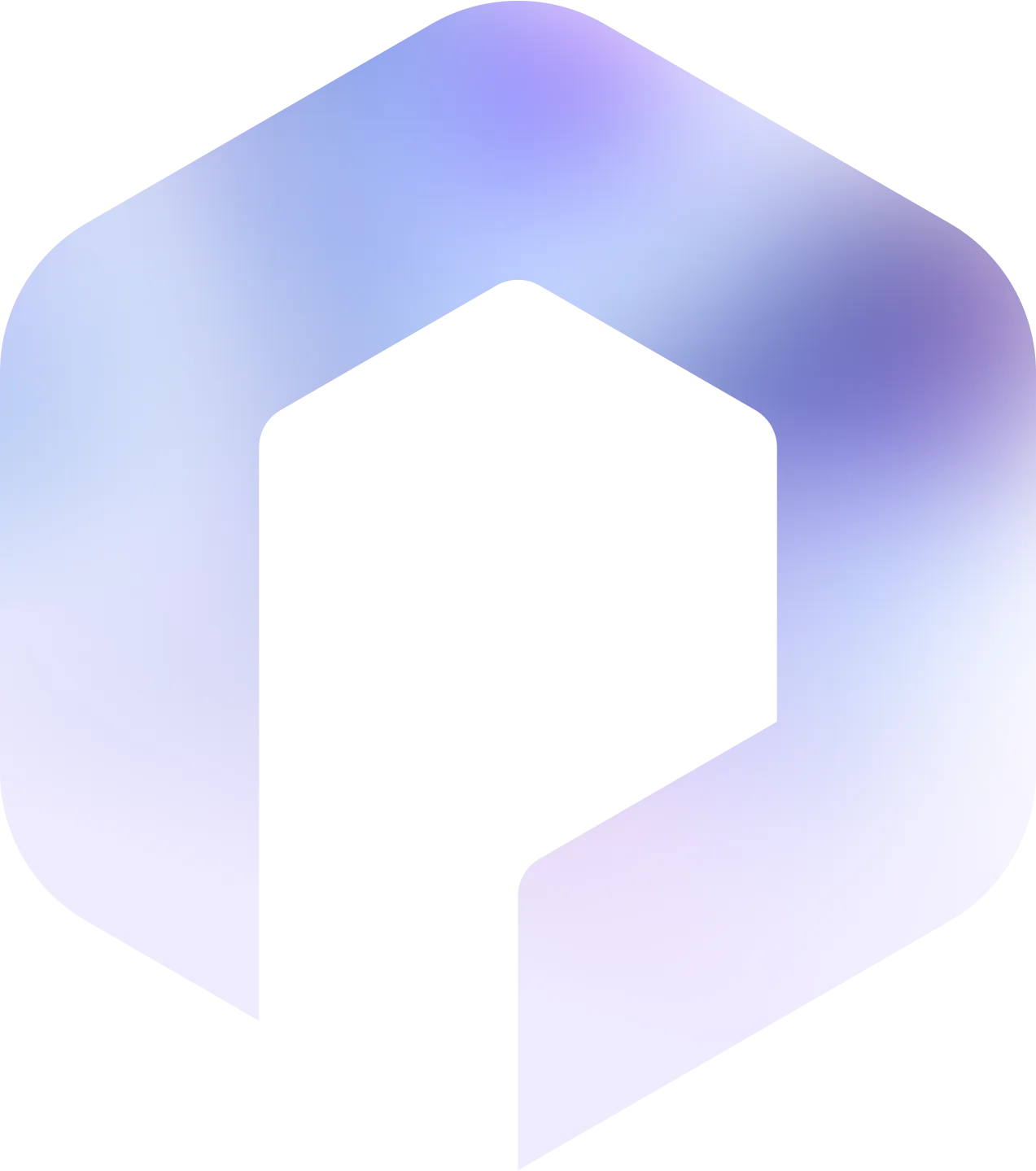
Suggested articles
.webp)



.svg)
.svg)
.svg)


